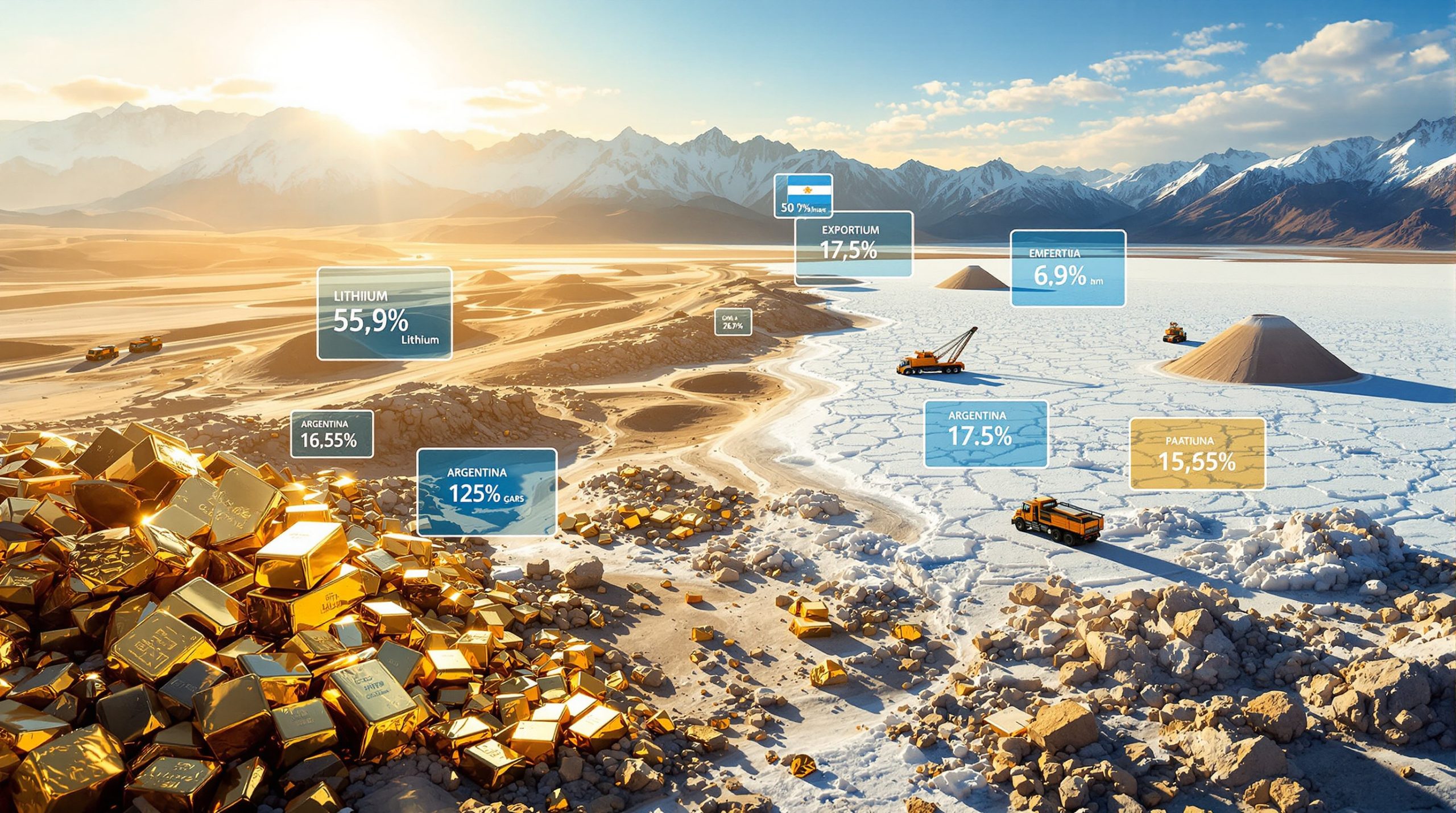Why Is Gold Trading at Historic Levels?
Gold continues to capture investors' attention as it trades at elevated levels, maintaining its position as the preeminent safe-haven asset in 2024. The precious metal has shown remarkable resilience and upward momentum, reflecting a complex interplay of economic conditions and geopolitical factors that have enhanced its traditional appeal as gold near record high prices continue to make headlines.
Key Factors Behind Gold's Performance
Gold's impressive trajectory stems from several interconnected market forces:
- Central bank purchasing has reached multi-decade highs
- Persistent geopolitical uncertainties across multiple regions
- Shifting Federal Reserve monetary policy expectations
- Dollar performance fluctuations affecting international demand
- Growing investor sentiment favoring traditional safe havens
The convergence of these factors has created particularly favorable conditions for gold, reinforcing its status as both a portfolio diversifier and inflation hedge performance during uncertain times.
How Have Interest Rate Cuts Influenced Gold's Rally?
The Fed's Monetary Policy Shift
The Federal Reserve's recent monetary policy decisions have significantly contributed to gold's upward momentum. After a lengthy period of tightening, the Fed has pivoted toward a more accommodative stance. The central bank implemented its first rate cut in September 2024, signaling the beginning of a new cycle that typically benefits non-yielding assets like gold.
Market Expectations for Future Rate Cuts
Financial markets are currently pricing in additional rate reductions through 2024 and into 2025. According to the CME FedWatch tool, market participants see high probabilities for further easing in the coming months, with expectations of multiple quarter-point cuts.
"The markets are currently anticipating further monetary easing, which has historically supported gold prices," notes market strategist Kerry Stevenson from Gold Newsletter. "This expectation alone can drive investment decisions, even before actual policy changes occur."
Gold's Relationship with Interest Rates
The precious metal traditionally performs well in low-interest-rate environments for several compelling reasons:
- Reduced opportunity cost of holding non-yielding assets
- Diminished appeal of interest-bearing investments
- Increased liquidity in financial markets
- Enhanced investment appeal compared to cash positions
Historical data demonstrates that gold often begins its upward trajectory as soon as markets anticipate rate cuts, sometimes even before the first reduction occurs.
What Role Are Central Banks Playing in the Gold Market?
Strategic Reserve Diversification
Central banks worldwide have emerged as significant players in the gold market, with many institutions actively expanding their holdings as part of strategic reserve diversification efforts. This institutional buying provides a solid foundation for gold near record high demand beyond typical investment and jewelry consumption.
According to the World Gold Council, central banks have collectively purchased more than 1,000 tons of gold annually in recent years, marking the most substantial official sector buying since the 1960s.
China's Expanding Influence
China's central bank has taken bold steps to position itself as a major gold market participant, steadily increasing its official gold reserves while encouraging domestic gold acquisition. This approach reflects both economic strategy and geopolitical positioning.
The People's Bank of China has reported gold purchases for numerous consecutive months, demonstrating a persistent accumulation strategy that signals long-term confidence in the metal's value.
Emerging Market Acquisition Trends
Several emerging economies have led the charge in gold acquisitions:
| Country | Strategic Approach | Key Motivations |
|---|---|---|
| China | Consistent monthly accumulation | Dollar diversification, strategic positioning |
| India | Reserve modernization | Currency stability, traditional value |
| Turkey | Accelerated purchasing program | Economic security, inflation protection |
| Russia | Multi-year accumulation strategy | Sanctions hedging, geopolitical considerations |
This persistent central bank buying creates consistent demand pressure while also signaling confidence in gold's long-term value proposition.
How Are Geopolitical Tensions Supporting Gold Prices?
Regional Conflicts and International Relations
Recent developments in international relations have heightened market anxiety. Ongoing conflicts in Eastern Europe and the Middle East, coupled with trade tensions between major economic powers, have created persistent uncertainty that typically benefits safe-haven assets.
Gold has historically served as a refuge during periods of international conflict and diplomatic strain. The current geopolitical landscape reinforces this pattern through:
- Flight-to-safety investment flows during crisis periods
- Hedging against potential conflict escalation
- Diversification away from geopolitically vulnerable assets
- Insurance against unexpected diplomatic developments
"Geopolitical risk is notoriously difficult to price into markets," explains finance professor Kwok Liu of Singapore Management University. "Gold provides tangible security during periods when conventional assets face heightened uncertainty."
Monetary Sovereignty Concerns
Beyond immediate conflicts, a more subtle geopolitical factor supporting gold involves monetary sovereignty and de-dollarization efforts by several nations. Countries seeking to reduce dependence on the dollar-based financial system often turn to gold as an alternative reserve asset.
What Technical Factors Are Driving Gold's Price Movement?
Breaking Through Resistance Levels
Gold's price action has demonstrated remarkable technical strength in recent months, with the breaking records trend showing it pushing through previous resistance levels and establishing new support zones. Market analysts note several key technical patterns:
- Successful tests of important moving averages
- Bullish cup-and-handle formations on longer timeframes
- Relative strength indicators showing positive momentum
- Volume patterns confirming upward price movement
"The technical picture for gold has improved substantially," notes senior market analyst Phillip Streible of Blue Line Futures. "We're seeing higher lows and higher highs—the classic definition of an uptrend."
Volume and Momentum Analysis
Trading patterns reveal strong conviction behind the current rally:
- Increasing volume during upward price movements
- Positive momentum indicators across multiple timeframes
- Limited profit-taking despite elevated valuations
- Institutional positioning favoring extended exposure
The combination of favorable technical indicators alongside supportive fundamentals creates a compelling case for continued strength.
How Does Gold Compare to Other Precious Metals?
Silver's Parallel Performance
Silver has mirrored gold's impressive gains in many respects, though with its characteristic higher volatility. This synchronized movement reflects:
- Historical correlation between the two metals
- Similar responsiveness to macroeconomic conditions
- Shared appeal as monetary alternatives
- Complementary industrial and investment demand
The gold-to-silver ratio, a closely watched metric indicating relative value between the metals, has fluctuated between 70:1 and 80:1 in recent months, suggesting periods of both relative strength and potential opportunity.
Platinum and Palladium Markets
The broader precious metals complex shows varied performance:
| Metal | Performance Trend | Key Demand Drivers | Industrial Applications |
|---|---|---|---|
| Platinum | Moderate gains | Industrial demand | Automotive catalysts, jewelry |
| Palladium | Price consolidation | Automotive sector | Emission control, electronics |
| Gold | Sustained strength | Investment flows | Jewelry, electronics, medical |
| Silver | Upward momentum | Dual industrial/investment | Solar panels, electronics, medical |
Each metal responds differently to economic cycles and industrial demand patterns, creating diverse performance profiles even within the precious metals category.
What Are Expert Forecasts for Gold's Future?
Near-Term Price Projections
Market specialists have provided increasingly constructive outlooks for gold prices:
- Bank of America analysts project gold could reach $3,000 per ounce over the next 12-18 months
- Goldman Sachs has raised its gold price target, citing central bank demand and macroeconomic factors
- Citigroup strategists note potential for significant volatility but with an overall bullish bias
"The fundamental backdrop for gold remains constructive," states metals strategist James Steel of HSBC. "Rate cuts, geopolitical risks, and persistent central bank buying provide multiple supports for prices."
Long-Term Market Outlook
Looking further ahead, several factors could support extended strength in gold prices:
- Structural shifts in global reserve currency preferences
- Continued central bank purchasing programs
- Growing recognition of gold's portfolio diversification benefits
- Persistent debt concerns across major economies
While short-term price movements may experience volatility, the longer-term structural factors supporting gold near record high valuations appear firmly established.
How Is Gold's Rally Affecting Equity Markets?
Relationship with Stock Performance
Gold's strength has occurred alongside periods of both equity market resilience and volatility. Rather than displaying a consistently inverse relationship with stocks, gold has sometimes moved independently, reflecting its multi-faceted role in modern portfolios.
During periods of heightened market stress, gold often demonstrates its traditional negative correlation with risk assets. However, in trending markets driven by liquidity and monetary policy expectations, both gold and equities can sometimes move in parallel.
Investment Rotation Patterns
Market data suggests strategic allocation adjustments across investment portfolios:
- Increased allocation to gold-linked assets as a percentage of balanced portfolios
- Growing interest in gold-backed ETFs for liquid exposure
- Enhanced institutional positioning in mining equities
- Portfolio hedging strategies incorporating precious metals exposure
"We're seeing more sophisticated approaches to gold allocation," explains portfolio manager Rebecca Patterson of Bridgewater Associates. "Rather than viewing it as a simple hedge, investors recognize its potential to enhance risk-adjusted returns through multiple market environments."
What Economic Indicators Should Gold Investors Monitor?
Critical Data Releases
Several key economic reports typically influence gold's trajectory:
- U.S. Personal Consumption Expenditures (PCE) index – the Fed's preferred inflation gauge
- Employment statistics, particularly non-farm payrolls and unemployment rates
- Manufacturing and service sector PMI readings
- Consumer confidence and retail sales data
Each of these indicators provides insights into economic health and potential monetary policy responses that directly impact gold's investment thesis.
Monetary Policy Signals
Beyond economic data, statements from central bank officials provide critical context for gold's outlook:
- Federal Reserve meeting minutes and official communications
- European Central Bank policy decisions
- Bank of Japan intervention strategies
- People's Bank of China reserve management practices
"The gold market has become increasingly sensitive to changes in central bank rhetoric," notes former Fed economist Claudia Sahm. "Even subtle shifts in tone regarding inflation tolerance or employment priorities can trigger significant price movements."
How Can Investors Gain Exposure to Gold's Performance?
Physical Ownership Options
Investors seeking direct gold exposure can consider several approaches:
- Bullion purchases (bars and coins) with secure storage solutions
- Allocated storage programs through reputable custodians
- Precious metals certificates from established institutions
- Numismatic collections (though these carry additional premium factors)
Each physical ownership method carries distinct considerations regarding liquidity, security, insurance, and authentication requirements.
Financial Instruments
For those preferring market-based exposure:
- Gold-backed exchange-traded funds (ETFs) like GLD and IAU
- Gold mining equities and indexes such as GDX and GDXJ
- Futures and options contracts for sophisticated investors
- Specialized precious metals mutual funds with professional management
"The expansion of gold investment vehicles has dramatically improved accessibility," explains finance professor Campbell Harvey of Duke University. "Today's investors can fine-tune their exposure to match specific portfolio objectives without the logistical challenges of physical ownership."
Geological Factors Affecting Gold Supply
Mining Production Challenges
The gold market faces several supply-side constraints that may influence long-term price dynamics:
- Peak gold production concerns as discovery rates decline
- Increasing extraction costs at deeper mining levels
- Longer development timelines for new projects
- Stricter environmental regulations affecting operations
"The industry is experiencing a structural shift in discovery patterns," explains mining analyst John Hathaway of Sprott Asset Management. "Major new discoveries have become increasingly rare, while the average grade of producing mines continues to decline."
Reserve Grade Considerations
A critical but often overlooked factor in gold supply involves ore grade—the concentration of gold within mined material:
- Average grades have declined approximately 30% over the past decade
- Lower grades require processing more material for equivalent output
- Energy costs increase proportionally with lower-grade processing
- Environmental footprint expands with more extensive operations
These geological realities create natural constraints on supply expansion, potentially supporting prices during periods of increased demand.
FAQ: Gold's Performance Fundamentals
Why might gold perform well despite stock market strength?
Gold's current performance reflects multiple factors beyond typical equity market correlation. While stocks have generally performed well, concerns about valuations, monetary policy changes, and geopolitical risks have enhanced gold's appeal as a portfolio diversification tool. The metal often serves as an insurance policy against tail risks that may not be reflected in current equity prices.
How does inflation affect gold prices?
Gold has historically served as an inflation hedge, as its limited supply and physical properties help preserve purchasing power when fiat currencies lose value. During inflationary periods, especially when real interest rates (nominal rates minus inflation) turn negative, gold typically outperforms paper assets. However, the relationship isn't always immediate or linear, as other factors like monetary policy and dollar strength also influence prices.
What impact does dollar strength have on gold valuations?
The U.S. dollar and gold often exhibit an inverse relationship for several reasons. First, gold is priced in dollars globally, so a stronger dollar makes gold more expensive for international buyers, potentially reducing demand. Second, dollar strength often correlates with rising real interest rates, which increase the opportunity cost of holding non-yielding assets like gold. When the dollar weakens, these effects typically reverse, supporting gold prices.
Are gold mining stocks keeping pace with physical gold's performance?
Gold mining equities have shown varied performance relative to the metal itself. While many producers benefit from higher gold prices through expanded profit margins, company-specific factors create significant performance divergence. Mining stocks typically offer operational leverage to gold prices (magnifying both gains and losses) but also introduce additional risks related to management decisions, geopolitical exposure, and production challenges.
Conclusion: Gold's Resilient Appeal in Uncertain Times
Gold's enduring role in the global financial system continues to evolve, with its performance reflecting both traditional safe-haven characteristics and emerging strategic considerations. The combination of accommodative monetary policy, geopolitical uncertainty, and systematic central bank purchases has created supportive conditions for the precious metal.
As investors navigate complex market dynamics, gold maintains its dual function as both a crisis hedge during turbulence and a strategic asset during monetary expansion. While price volatility remains possible in the short term, the fundamental factors supporting gold near record high levels appear firmly established for the foreseeable future.
The record highs analysis shows that the metal's centuries-old history as a store of value continues to resonate in today's rapidly changing financial landscape, offering tangible security amid increasing economic and geopolitical complexity. For those looking to capitalize on these trends, reviewing comprehensive investment strategies guide and following the latest market surge insights can help inform more effective portfolio decisions.
Ready to Capitalise on the Next Major Gold Discovery?
Discovery Alert's proprietary Discovery IQ model delivers instant notifications on significant ASX mineral discoveries, turning complex data into actionable investment insights. Explore why major gold discoveries can lead to substantial returns by visiting Discovery Alert's dedicated discoveries page and position yourself ahead of the market.




